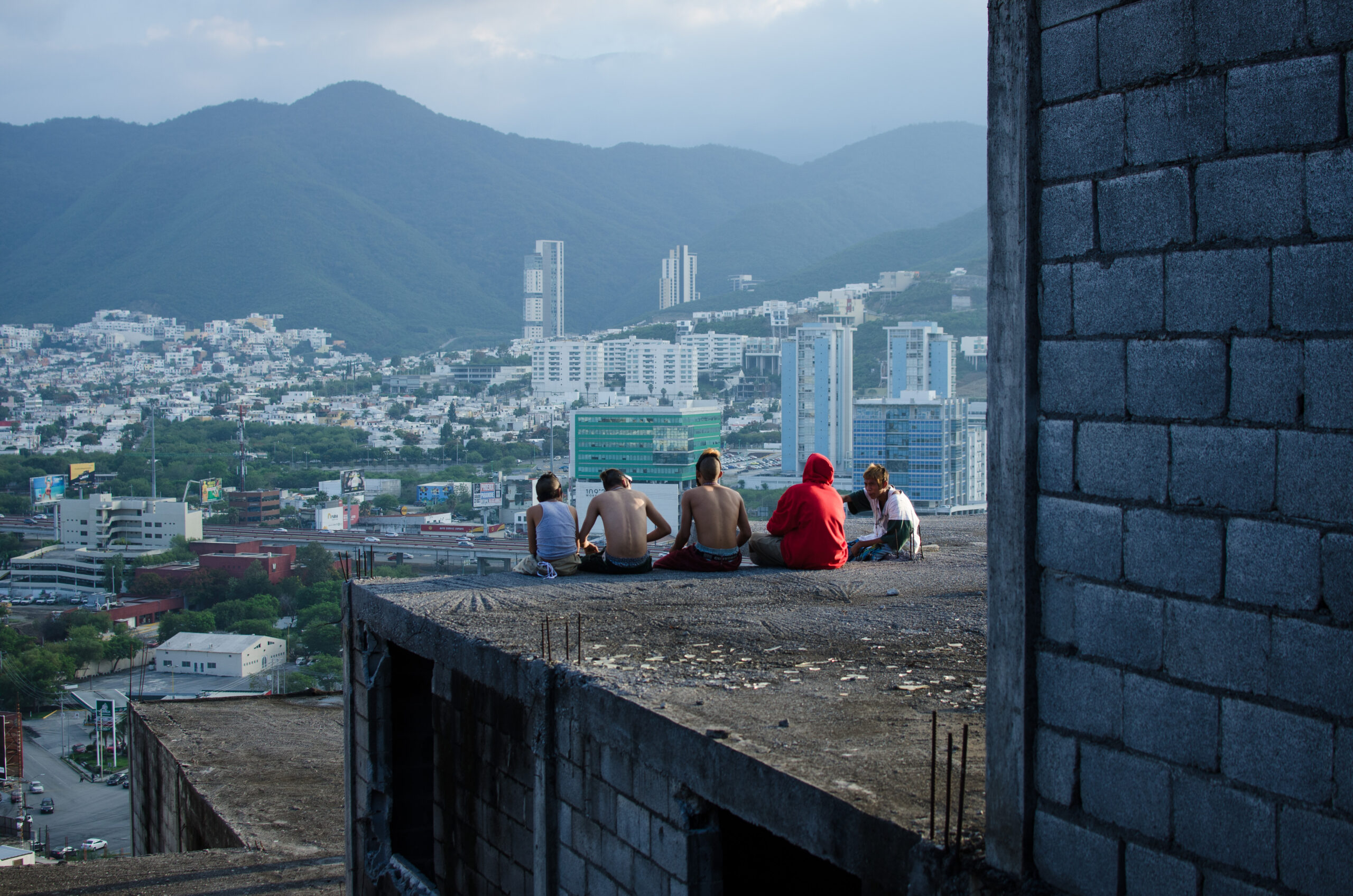There was a time when all I knew of Monterrey or Mexico was Christmas and amusement parks such as Bosque Magico/Kidzania, and Plaza Sesamo’s Abelardo, Big Bird’s jewel-toned Mexican cousin. My grandmother’s house on Monterrey’s outskirts saw me through various eras: bookworm child, tumblr tween, grunge youth. Until I became an adult, I saw little of the city or what lay beneath its industrial skeleton or behind the mountains that enshroud the city like blue dreams. As an adult, I was able to catch glimpses of the region I never saw, like Santa Catarina. I also started seeing how the rest of Mexico saw Northern Mexico as backward and whitewashed. But these stereotypes are too small for me or my family who consist of different racial backgrounds of Regiomontanos.
Along the way, these three pieces of media helped me feel closer to Mexico – Rebelde, Los Jefes, y Ya No Estoy Aquí – and the place where my parents met before they moved to San Francisco. Where in another life, I’m surely living surrounded by family, good food, and the subtropical joy of my grandmother’s house.
Rebelde is a Ridiculous, Unifying Joy

Rebelde surely needs no introduction but the fact that this emblematic tv show was shot in the city of Monterrey might. This was the first Mexican TV series I watched (unless you count Disney XD en Espanol). Rebelde’s very own leading man Miguel graduates high school in Monterrey only to ride his motorcycle to Elite Way Boarding School in Mexico’s capital. He’s there to exact revenge on the rich businessman who killed his father, but accidentally falls in love with his daughter and the rock band he forms with his new friends: RBD.
As ridiculous as the premise can sound, the numbers don’t lie – with their recent tour and headlines – Rebelde is a show that unites generations of Latinamericans worldwide. I see my tias in Alma Rey’s stunning y2k outfits and hear my fresa cousins in Mia Colucci’s accent – so much of my childhood is felt through it. Even Mia’s constant bullying of Miguel as “El Regiomontano” or “Charro” illustrates a real conflict between people from the Capital and The North. In season two when Miguel takes Mia to Monterrey, they go on a boat ride date in Parque Fundidora. The montage ends with her saying she loves it here and wants to stay forever, taking back what she said. “Tanto que yo critiqaba tu rancho!” I’ve rewatched Rebelde twice already as an adult – It’s my comfort show… although I can never watch all 440 episodes. No se pasen.
Los Jefes Offers a Critical Portrayal of Life in Monterrey

Los Jefes is a 2015 crime action comedy set in Monterrey. Mexican music group Cartel de Santa are the voice of the city, starring, producing, and writing the film. As lead vocalist and writer, El Babo is the creative force behind the project. This is Monterrey as envisioned by one of its brightest stars – Los Jefes shows what happens when two young students, one brown and one pale, one sheltered and one affiliated, try to score weed from the cartel. The journey through the city’s underground is a perfect playground for Cartel De Santa’s score, winking at you as the stereotypes the students appear to represent are broken as the plotline gets more interesting. Los Jefes is the first movie I watched that took place in Monterrey, filling me with so much pride. El Babo’s performance is as hilarious as it is impactful.
This film, like much of narco, pop culture, has an opportunity to enable or criticize the drug trade. Even as an American, I am fully aware that everyone knows someone impacted by the cartels, especially in Northern Mexico. I’ve heard horror stories from people just trying to eat out or drive around in MTY 2000s. Their experiences force me to think critically about this movie, even while it paints an accurate picture of how Monterrey’s elite, its police, and most wanted are all in bed together. Los Jefes manages this balancing act by refusing to glamorize or erase the pain narco-trafficking causes families. The two college student protagonists are a great vehicle for an outsider’s perspective, offering a glance into the life that El Babo lived himself.
Ya No Estoy Aquí Gives Us Our Blend

Ya No Estoy Aquí (I’m No Longer Here) is a 2019 Netflix feature that introduced the world to Cholombianos. This film demonstrates how culture transcends borders, as Cholombianos themselves honor the Black and Native roots that make up Latinidad, without which no Latin culture could exist. Cumbia is a musical genre born in Colombia through Black and Native American cultural exchange. Monterrey slowed + reverbed these Colombian originals, making them central to a unique subculture.
I remember one Christmas, my uncle, a photographer from Monterrey, was organizing a photoshoot with Cholombianos, showing me his research and educating me on the importance of radio shout-outs and amazing outfits. To me, this film was an example of a sincere portrait of Mexicans bearing cultural identity as resistance. It is one that stands against whiteness which seeks to consume and extract, while the dance at the closing scene of Ya No Estoy Aqui acts as an offering and testament to the land, city, and diversity within the American continent. Hitting a Wepa in the mountains is a mark of Native Mexican futurism that I’m proud to say comes from my mother’s home.

